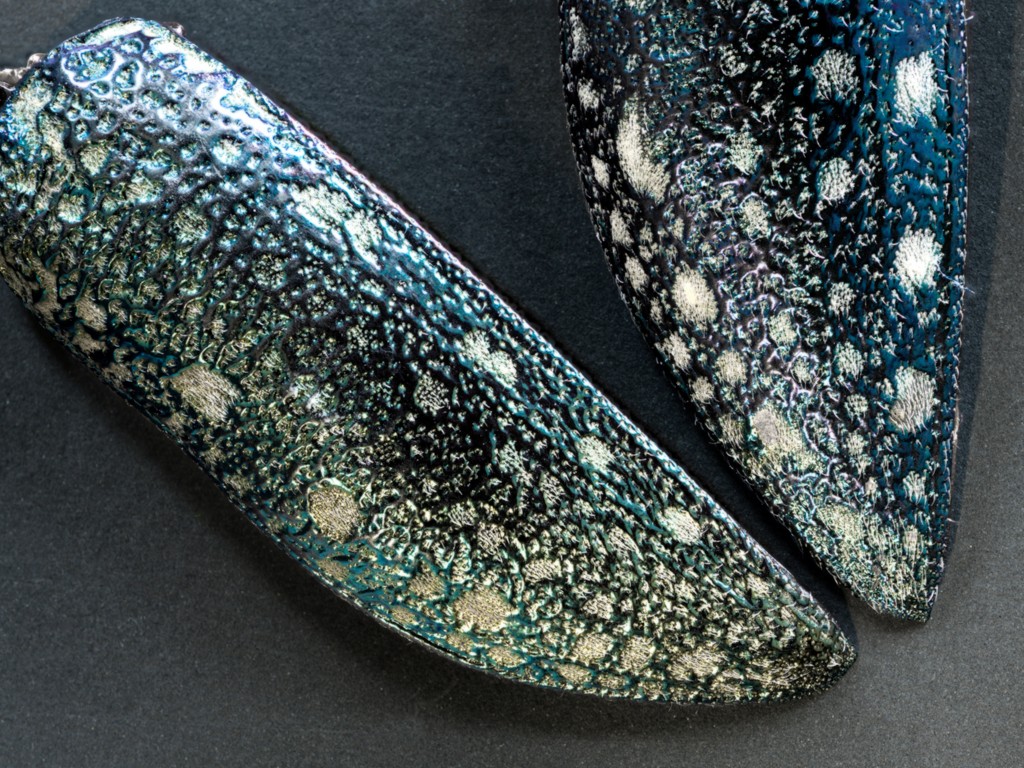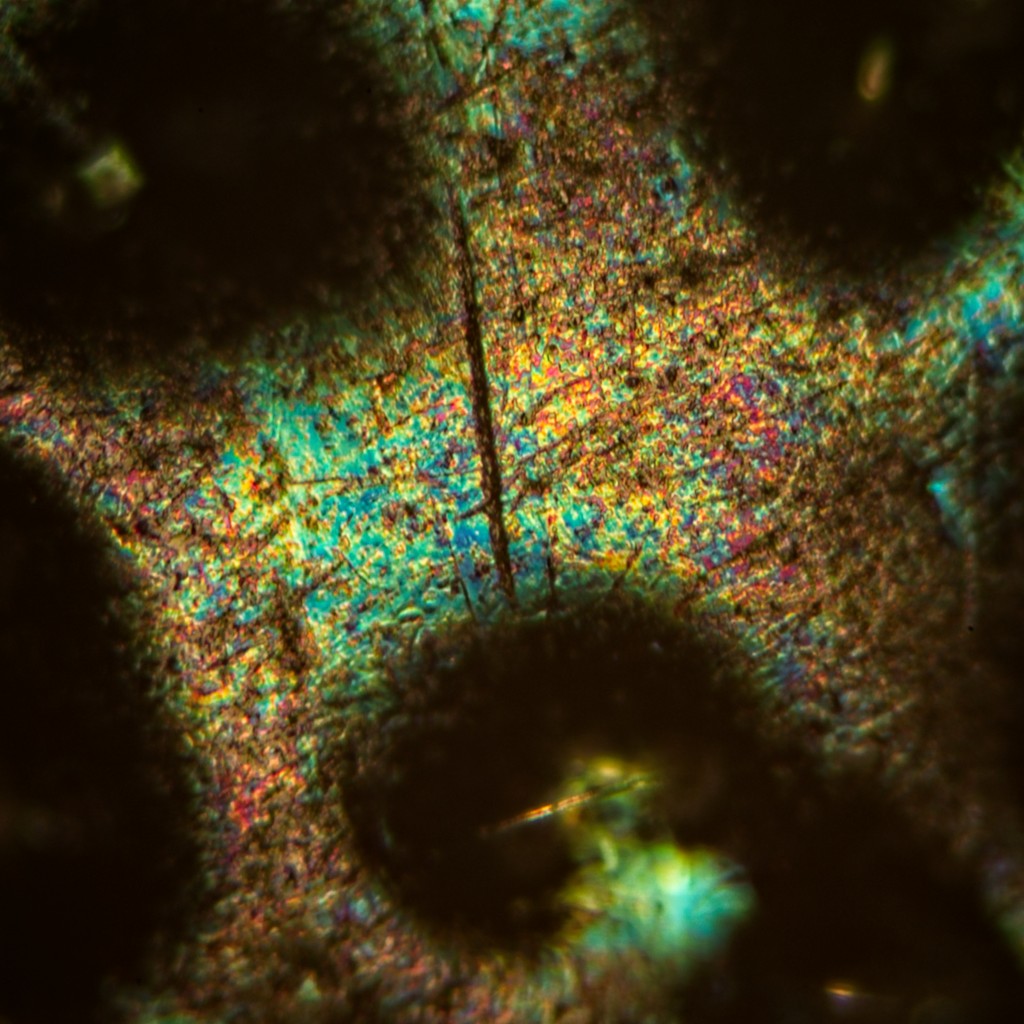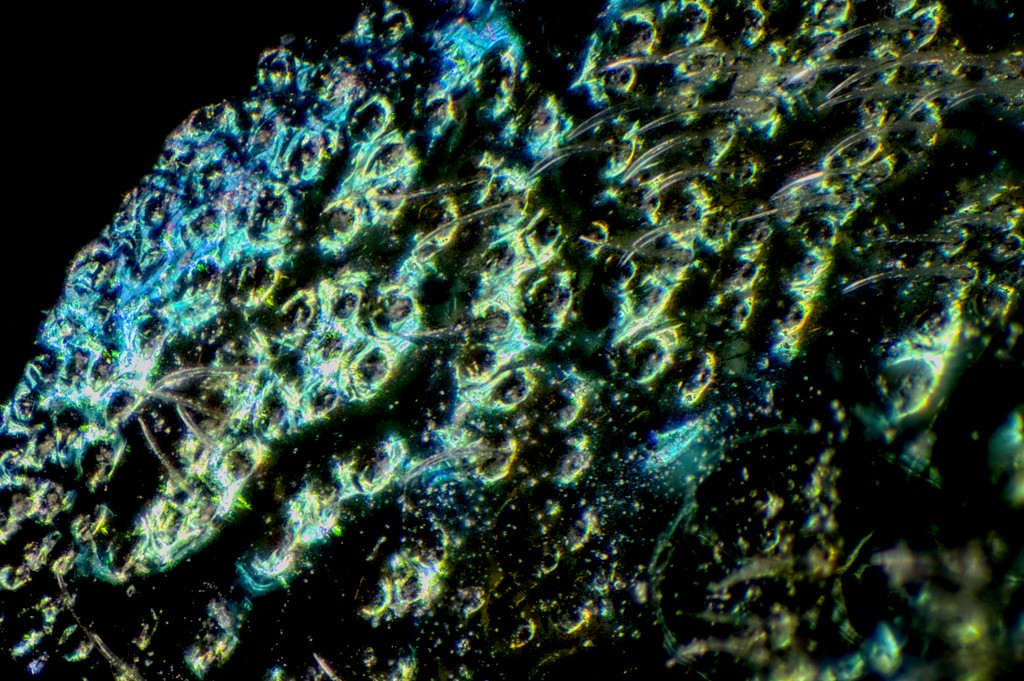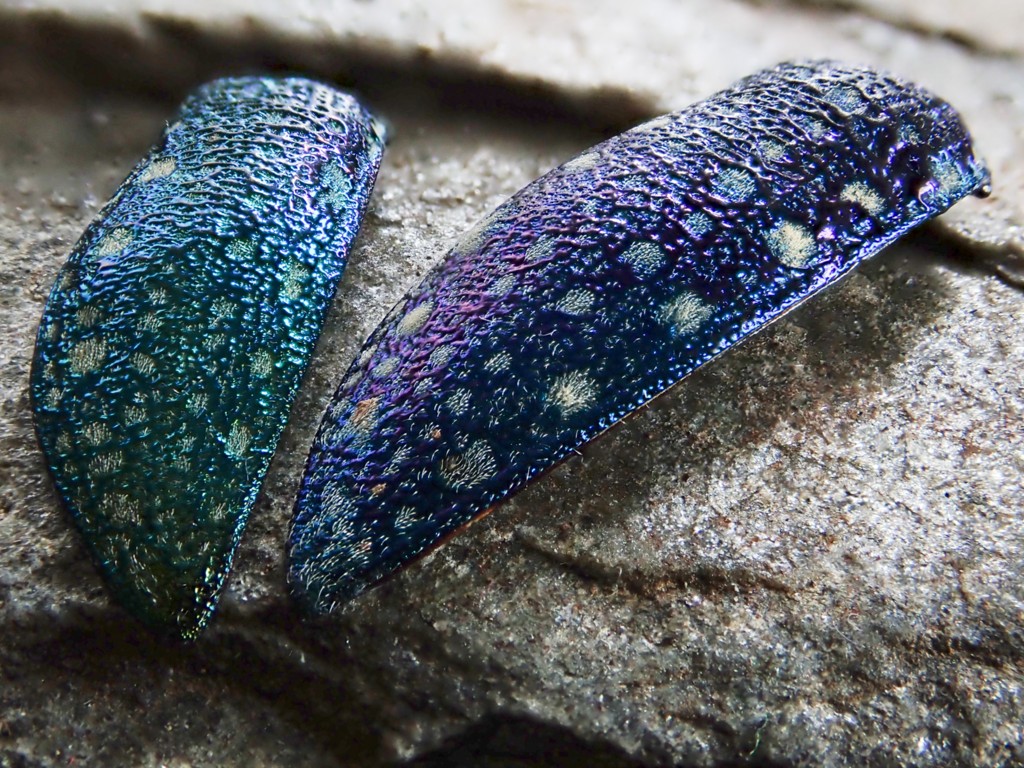Beetle Wings
The pictures show wings from a species of the buprestidae family, found in the Adrar region of Mauritania. They display angle dependent colours that are changing from purple to blue to green. Although the outer layer structure of this species appears to be unknown, it is reasonable to assume that the colour results at least partially from photonic structures. Higher magnification reveals a patchwork of flaky, planar areas (green-blue) and domains with aggregated ellipsoids (red-yellow-brown-purple). Size, resolution and field of view are given in the lightbox.
Structural colour is found in many insects, feathers, fish scales and some plants. It is based on light interference that is taking place at structures which are built from two alternating materials with different refractive indices and a spacing in the order of 1/4 of the wavelength of visible light. A review dedicated to photonic structures in beetles was given by Seago et al. (2008).
As a potential alternative to pigments and dyes photonic materials have gained much interest, e.g. colloidal crystals (opals) or lyotropic liquid crystalline phases of cellulose nano crystals. However, iridescence and the control of pitch or spacing remain challenging. Nevertheless, progress in 3D printing might allow for the design and controlled fabrication of suitable structures. This was demonstrated by a joint work from researches from the universities of Kiel and Bochum in Germany who made use of the two photon polymerization of a photosensitive resin (Zyla et al. (2022)). In order to obtain structures in the sub-100 nm range the authors applied an interference assisted variant of that technique, where the polymerization takes place in a thin layer of the resin only within those sections of positive interference between the incident and the reflected laser beams. The created structures and optical properties resemble those of the blue coloured wings of butterflies of the Morpho family.
However, unlike butterfly wings which will only come into contact with water, the applied artificial structures may imbibe organic solvents which diminish the difference of the refractive indexes and shift the colour to yellow and eventually to transparency. Zyla et al. propose to use such structures and solvent induced colour shifts for counterfeit protection.
Structural colour is found in many insects, feathers, fish scales and some plants. It is based on light interference that is taking place at structures which are built from two alternating materials with different refractive indices and a spacing in the order of 1/4 of the wavelength of visible light. A review dedicated to photonic structures in beetles was given by Seago et al. (2008).
As a potential alternative to pigments and dyes photonic materials have gained much interest, e.g. colloidal crystals (opals) or lyotropic liquid crystalline phases of cellulose nano crystals. However, iridescence and the control of pitch or spacing remain challenging. Nevertheless, progress in 3D printing might allow for the design and controlled fabrication of suitable structures. This was demonstrated by a joint work from researches from the universities of Kiel and Bochum in Germany who made use of the two photon polymerization of a photosensitive resin (Zyla et al. (2022)). In order to obtain structures in the sub-100 nm range the authors applied an interference assisted variant of that technique, where the polymerization takes place in a thin layer of the resin only within those sections of positive interference between the incident and the reflected laser beams. The created structures and optical properties resemble those of the blue coloured wings of butterflies of the Morpho family.
However, unlike butterfly wings which will only come into contact with water, the applied artificial structures may imbibe organic solvents which diminish the difference of the refractive indexes and shift the colour to yellow and eventually to transparency. Zyla et al. propose to use such structures and solvent induced colour shifts for counterfeit protection.
-

My Album 1_macro
-

My Album 3_micro
-

My Album 2_micro
-

My Album 0_normal



